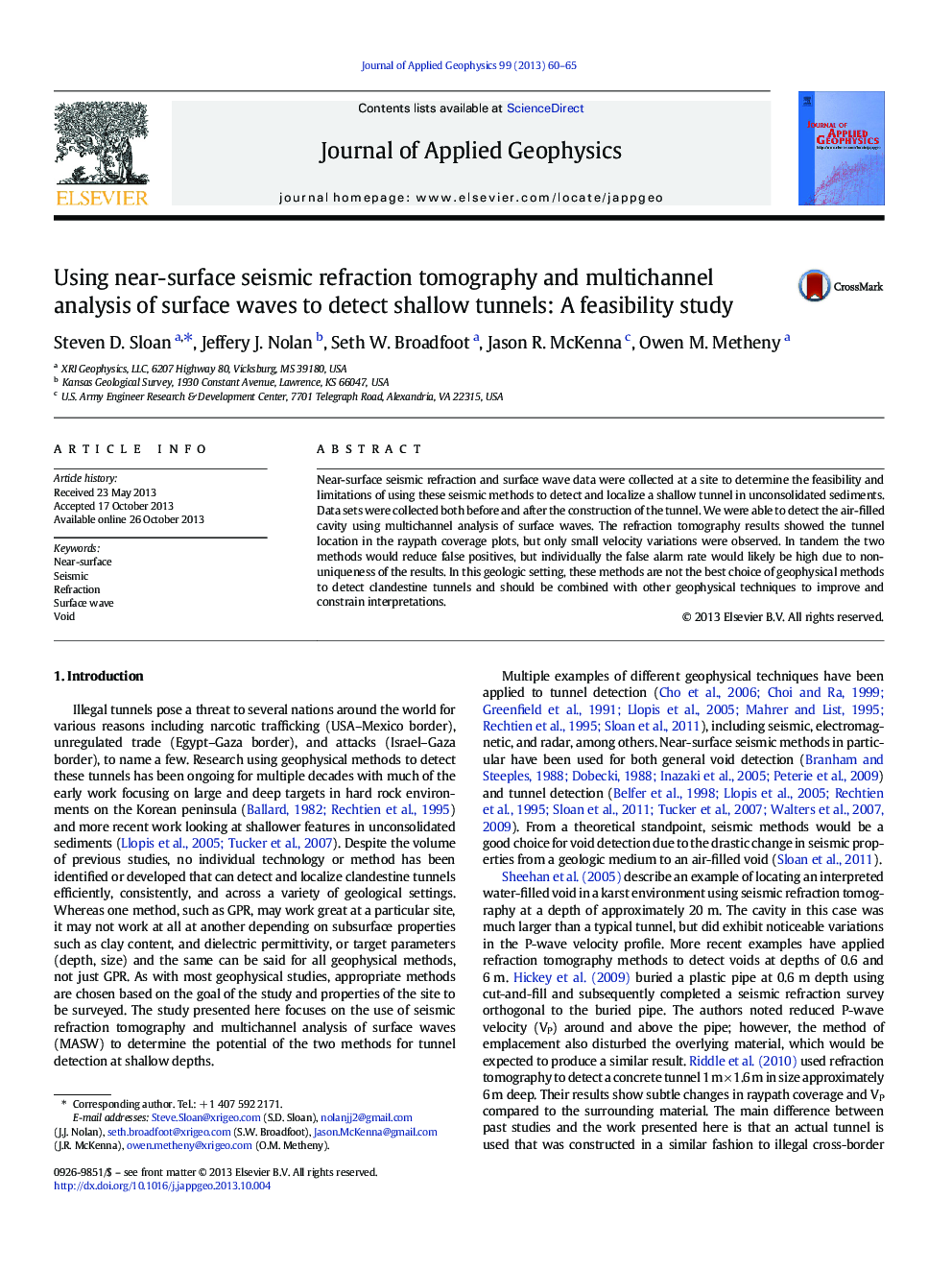| Article ID | Journal | Published Year | Pages | File Type |
|---|---|---|---|---|
| 4740240 | Journal of Applied Geophysics | 2013 | 6 Pages |
•This study was done as part of an undergraduate research project.•Seismic methods were used to determine feasibility of detecting shallow tunnels.•Tomography velocity results were non-unique independently.•Raypath plots were the best indicator from the tomography data.•Surface wave data detected the tunnel accurately.
Near-surface seismic refraction and surface wave data were collected at a site to determine the feasibility and limitations of using these seismic methods to detect and localize a shallow tunnel in unconsolidated sediments. Data sets were collected both before and after the construction of the tunnel. We were able to detect the air-filled cavity using multichannel analysis of surface waves. The refraction tomography results showed the tunnel location in the raypath coverage plots, but only small velocity variations were observed. In tandem the two methods would reduce false positives, but individually the false alarm rate would likely be high due to non-uniqueness of the results. In this geologic setting, these methods are not the best choice of geophysical methods to detect clandestine tunnels and should be combined with other geophysical techniques to improve and constrain interpretations.
